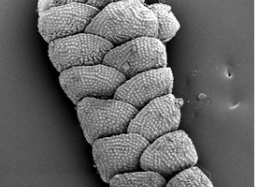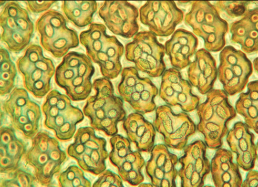All About Bryophytes
Bryophytes—the group of plants that includes today's liverworts, hornworts, and mosses—have an ancient lineage. They're modern relatives of the earliest land plants, which made the transition from living in the water to colonizing soggy ground more than 450 million years ago.
No small feat, this event literally changed the course of our planet's history, allowing life as we know it to evolve. These tiny pioneers helped establish soil and contributed oxygen to our atmosphere, creating rich terrestrial landscapes where other plants and animals could eventually emerge and flourish. Learning more about bryophytes and their relationship to other land plants helps us better understand how our world works.
Primitive Plants
As early land plants, bryophytes have some unusual, primitive traits. Unlike more recently evolved plants, they're non-vascular—they lack a circulatory system for transporting water and food throughout their tissue. That's why they live only in wet, humid environments where they can absorb nutrients directly into their cells.
They also lack complex structural systems—the true roots, stems, and leaves that evolved with modern plants—which means that bryophytes rarely grow more than a few inches tall. Instead, they form dense, spreading mounds that carpet the ground, rocks, and trees of both tropical and temperate forests around the world. Bryophytes also don't flower or produce seeds, instead growing from spores. Like a seed, a spore develops into an embryo. But unlike a seed, the spore doesn't contain food to help the embryo grow.
Environmental Role
For such tiny, often inconspicuous organisms, bryophytes have quite a big job. They help break down rocky, barren terrain into nutritious soil where seeds from other kinds of plants can take root. Plus, bryophyte mats act like sponges and filters, helping to absorb runoff, prevent erosion, and purify the groundwater.
Bryophytes also offer microhabitats that are critical to the survival of a tremendous diversity of animals. Many kinds of invertebrates, such as insects, worms, and other organisms that are important to soil health make their homes in bryophyte mats. And several species of birds, rodents, amphibians, and reptiles use bryophytes as hunting grounds and for nesting materials, too.
Bryophytes & Humans
One of the most fascinating recent discoveries about bryophytes is their usefulness to humans. Because they're so small, bryophytes respond rapidly to changes in the environment. Slight fluctuations in air and water quality can dramatically affect their health, making them excellent indicators of pollutants, climate change, and even global warming.
Bryophytes also have interesting biological properties that have the potential to be used as anti-microbial and anti-fungal agents, pest repellents, and even muscle relaxants. Likewise, recent research has revealed that unique liverwort structures (called "oil bodies") hold powerful chemical compounds that have been shown to be effective in the treatment of certain types of cancer cells—and even HIV and AIDS!





